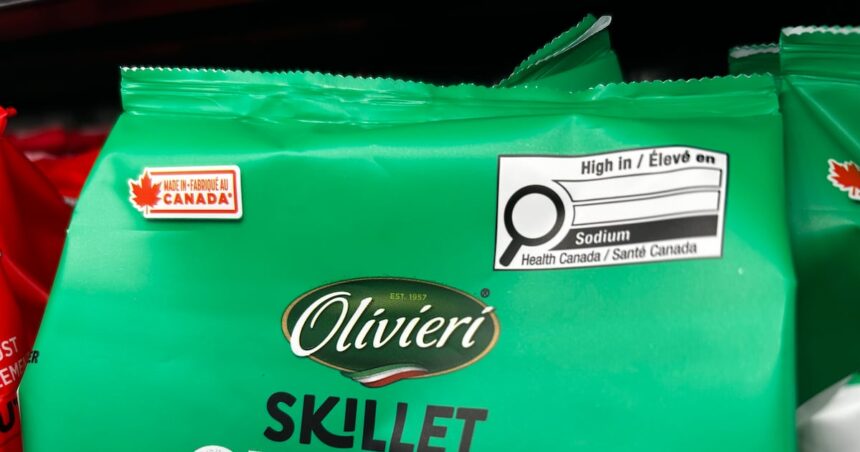In a sweeping move aimed at improving consumer awareness, Health Canada has unveiled stringent new food labeling requirements that will transform how Canadians interact with their grocery purchases. The regulations, which took effect this week, mandate front-of-package warning labels for products high in sodium, sugars, or saturated fats—nutrients linked to conditions like heart disease and diabetes that affect millions of Canadians annually.
“These new labels represent the most significant update to Canadian food packaging in over a decade,” said Dr. Theresa Tam, Canada’s Chief Public Health Officer. “Consumers deserve clear, immediate information about what they’re putting into their bodies, particularly when it concerns ingredients that may pose health risks when consumed in excess.”
The black and white octagonal warning symbols—reminiscent of stop signs—will appear prominently on the front of qualifying packaged foods, making nutritional concerns instantly visible before purchase. Health Canada estimates that approximately 35% of currently available processed foods will require these warning labels once the grace period ends.
Food manufacturers have been granted a transition period until January 2026 to fully comply with the regulations, allowing them to adjust formulations or deplete existing packaging inventory. Industry representatives from the Food Processors of Canada have expressed mixed reactions, with some voicing concerns about implementation costs while others view it as an opportunity to reformulate products toward healthier profiles.
“We’re already seeing companies reformulate their products to avoid having these warning labels,” noted Dr. Mary L’Abbé, nutritional sciences professor at the University of Toronto. “That’s exactly the intended effect—driving industry innovation toward healthier food options while empowering consumers with better information.”
The regulations include several exemptions, including whole foods like fruits, vegetables, unsweetened dairy products, and cooking ingredients like flour, sugar, and salt. Additionally, alcoholic beverages—despite often containing significant sugar content—remain exempt from these labeling requirements, a decision that has drawn criticism from some public health advocates.
For Canadian consumers, the impact will be immediately noticeable in grocery aisles. Jennifer Santos, a dietitian at Toronto General Hospital, suggests the labels will prove particularly helpful for time-pressed shoppers: “Most people don’t have time to study the detailed nutrition facts panel on every product. These front-of-package warnings provide an instantaneous nutritional snapshot that can guide better choices.”
Several other countries, including Chile, Mexico, and Israel, have implemented similar warning label systems with demonstrable results. Research from these markets indicates significant shifts in consumer purchasing behavior and subsequent product reformulations by manufacturers seeking to avoid warning labels.
The regulations represent part of Canada’s broader national health strategy targeting diet-related chronic diseases, which account for approximately 70% of premature deaths nationwide and billions in annual healthcare costs. Health Minister Mark Holland emphasized the economic dimension: “Beyond the human toll, diet-related diseases cost our healthcare system approximately $26 billion annually. These labels represent a simple yet effective tool to address this challenge.”
As Canadians navigate grocery stores in the coming months, they’ll gradually notice these changes taking effect across thousands of products. The question remains: will these stark warning labels fundamentally alter how we shop, eat, and approach nutrition as a nation, or will they become just another overlooked element on increasingly crowded food packaging?
















